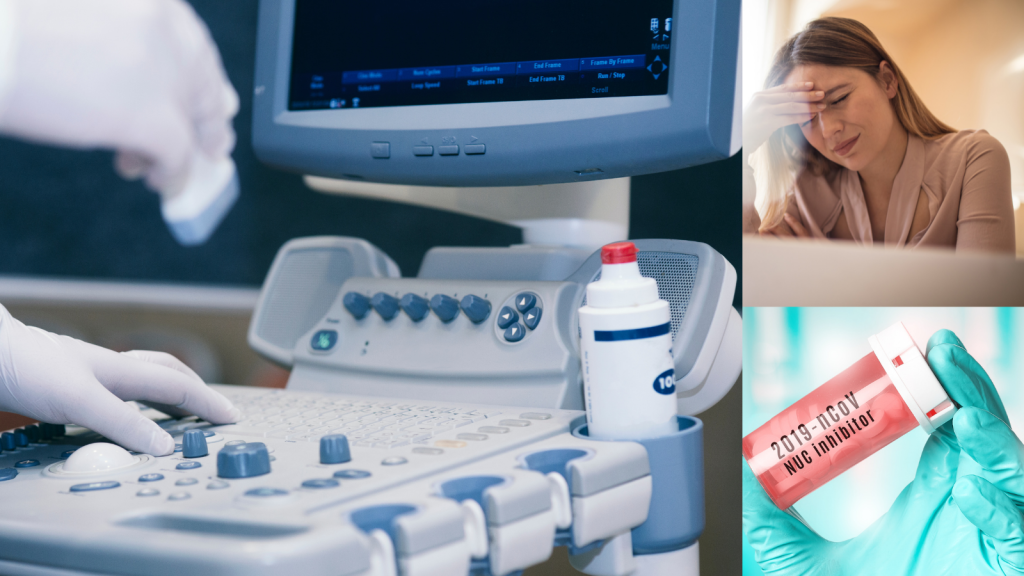Do You Really Know FDA Medical Device has 3 Classes to Ensure Safety for Patients?
The Food and Drug Administration (FDA) is setting up a system so that those who acquire heart valves have more information about the procedure and are better protected. It regulates all medical devices that are marketed in the United States. Devices are grouped into three classes.
Class I devices include simple items such as tongue depressors, bandages, and adhesive strips.
Class II devices are more complex, but still carry a low risk of failure or complications; items may include wheelchairs, crutches, and pregnancy testing Kits.
Class III devices have the highest risk of complications or failure due to their complexity—common examples include pacemakers and artificial joints.
Our ERP Software deals with these types Compliance and rules Implementations in manufacturing process. Book Your Call.
A device is assigned its class designation during the FDA approval process. The Center for Devices and Radiological Health develops policies to help manufacturers determine which class their product falls into. But where do these lines get drawn, and why?
With this information, medical device manufacturers in the premarket stage can better allocate resources for regulatory approval.
How Classes of Medical Devices Regulated by the FDA Differ?
The Food and Drug Administration (FDA) has classified over 1,700 distinct types of medical devices. The devices are organized in the Code of Federal Regulations (CFR) according to 16 specialties, such as cardiovascular or hematology devices. It is important for medical device manufacturers to understand how the FDA classifies their devices. Only devices that have been approved by the agency are legally allowed to be marketed and sold in the U.S. The most common types of classification are:
- Anesthesiology
- Cardiovascular
- Chemistry
- Dental
- Ear, Nose, and Throat
- Gastroenterology and Urology
- General and Plastic Surgery
- General Hospital
- Hematology
- Immunology
- Microbiology
- Neurology
- Obstetrical and Gynecological
- Ophthalmic
- Orthopedic
- Pathology
- Physical Medicine
- Radiology
- Toxicology
The devices exempt from premarket notification include Class I medical devices, which are the least risky and invasive. Some of the Classes II medical devices are also exempt from premarket approval.
Medicine is regulated by the FDA. A humanitarian device exemption may be given for devices intended to help with rare diseases, as there are too few patients with the disease in order to meet the “safety and effectiveness” standards.
All medical devices regulated by the FDA are subject to current Good Manufacturing Practice (cGMP) regulations, according to the classification of the device. But how do you know whether your product is classified as Class I or II, and whether you are required to undergo premarket notification?
CLASS I
According to the FDA, devices that fall under Class I are “not intended for use in supporting or sustaining life or of substantial importance in preventing impairment to human health.”
FDA-regulated devices, which contribute to 47 percent of approved devices on the market, have a tendency to malfunction.
Class I devices have a minimal impact on a patient’s health. These devices generally do not come into contact with the central nervous system, the cardiovascular system, or the internal organs of a patient. Class I devices are subject to fewer regulatory requirements than other kinds of medical devices.
The following are examples of Class I devices:
- Electric Toothbrush
- Tongue Depressor
- Oxygen Mask
- Reusable Surgical Scalpel
- Bandages
- Hospital Beds
- Non-electric wheelchair
How Class I Medical Devices Reach the Market
Class I devices are the fastest and easiest to bring to the market. These products are rarely critical to patients’ lives, present the lowest amount of risk, and as such require less regulatory oversight. A majority of Class I devices are exempt from FDA requirements for Premarket Notification (510k) and Premarket Approval (PMA).
The Federal Food, Drug, and Cosmetic Act (FFDCA) Applies to three classes of medical devices. Class I devices are subject to US Food and Drug Administration general controls for medical devices such as the requirement for registration and a quality management system. Class I, II, and III devices have differing requirements for safety and effectiveness.
Class 2
Class II medical devices present a higher risk level than Class I devices because of their potential to come into sustained contact with a patient’s cardiovascular system or internal organs. These can include devices which come into contact with a patient’s cardiovascular system or internal organs, and certain diagnostic tools.
The FDA defines Class II medical devices as being “applicable to devices for which general controls are not sufficient to provide reasonable assurance of their safety and effectiveness.”
The following are some examples of Class II medical devices:
- Catheters
- Syringes
- Contact Lenses
- Surgical Gloves
- Absorbable Sutures
- Pregnancy Test Kits
- Blood Pressure Cuffs
- Blood Transfusion Kits
Getting a Class II Medical Device to Market
According to the FDA, the devices can include any or all of the following control buttons, depending on the device:
- Premarket data requirements
- Guidelines
- Device performance
- Patient registries
- Special labeling requirements
- Post market surveillance
Most Class II devices undergo the FDA’s 510(k) premarket review process.
Class II devices require special controls in addition to the general controls mentioned above. Special controls may include special labeling requirements, patient registries, and performance standards.
The FDA requires devices classified as Class II to have a Premarket Notification or 510(k) application. This process establishes that a device is both safe and effective by showing that it has the same characteristics as another device already on the market.
FDA does not require that a premarket notification submission for a new type of medical device be identical to a previously cleared device, but it must be substantially equivalent to the predicate device in terms of use, design, materials, labeling, standards, and other characteristics.
The Food and Drug Administration has released a list of all exempt generic Class I, II, and III medical devices by Class, with an approximate date for each exemption. To view this list, go to the FDA Product Classification database.
Class 3
The Food and Drug Administration considers Class III devices to be those that “support or sustain life, are implanted, and for which there is no other adequate method of protection against health hazards.”
Only 10 percent of the devices regulated by the US Food and Drug Administration fall into Class III. Most Class III devices are permanently implanted and/or life support systems.
Some devices are initially classified as Class II but, if the company cannot show that they are substantially equivalent to a predicate (existing) product, they will be reclassified as Class III. De Novo, an alternate FDA pathway may be used if this happens to your device. Class III medical devices include:
- Breast implants
- Pacemakers
- Defibrillators
- High-frequency ventilators
- Cochlear implants
- Fetal blood sampling monitors
- Implanted prosthetics
Manufacturers who want to bring Class III medical devices to market must submit a premarket approval application to the Food and Drug Administration.
The Premarket Approval (PMA) application is the most intensive type of device-marketing application required by the Food and Drug Administration (FDA). Some FDA Class III devices are exempt from requiring PMA approval, but the majority are expected to gain this approval before being marketed.
The PMA process, premarket review, and substantial equivalence rely on clinical trials to prove safety and effectiveness. Devices that are substantially equivalent to a legally marketed device can go through the less rigorous 510(k) process, but require a thorough review of quality systems. You can search the FDA Premarket Approval (PMA) database and the 510(k) Premarket Notification database to determine whether a Class III device can be marketed with a 510(k).
To find your class, look at the list of classes that have been offered at the university or college you’re applying to.
Medical devices can be categorized by medical specialization—for example, orthopedic devices are classified as Surgical Devices.
In short, in way of the manufacturing process, Lot’s details and aspects are to covered before the production’s stages. Just talk to us. One call away

Sangeetha brings 20 years of experience in Information Technology which includes Solution architecting, building micro services, research, and evaluation of business applications, integrating apps.

